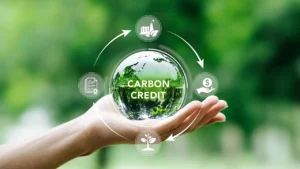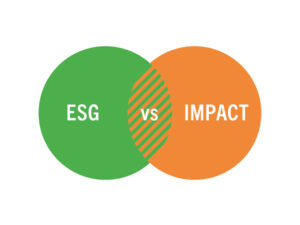Green bonds offer a novel way of financing that helps bridge the gap between profitable investing and environmental sustainability. They function as conventional bonds; however, with one major difference: the money raised has to be used for only environmental projects. From renewable energy projects to sustainable management of water systems, green bonds have proven to be a viable method to channel private capital towards solving urgent environmental problems while providing investors attractive returns.
The Basics of Green Bonds
Green bonds work with the same concepts as conventional bonds. When you buy a bond that is green, you’re loaning money to an issuer, whether it’s a corporation, government, or financial institution, in return for periodic interest payments and the repayment of your principal when it matures. Its “green” designation comes from the guarantee that proceeds will be used to fund projects that have evident environmental advantages. They typically fall under groups like energy efficiency, renewable energy, green transportation, sustainable wastewater management, water conservation, and adaptation to climate change. Green Bond Principles: Green Bond Principles, established by the International Capital Market Association, are a set of guidelines that can be used to promote transparency in the utilization of funds, evaluation and selection, the management of proceeds, and regular reporting of environmental impact.
Benefits of Investing in Green Bonds
Green bonds are a great investment option that offers an appealing combination of financial rewards as well as environmental benefits. From a financial point of view, green bonds usually provide yields that are comparable to conventional bonds that have similar maturity and credit ratings. Green bonds are typically issued by high-quality lenders such as governments and established companies, supplying investors with fairly steady income streams. The rising demand for sustainable investments has also led to a rise in the price of green bonds within certain markets, which could result in capital appreciation. Beyond financial benefits, green bonds enable investors to make sure their portfolios are in line with their beliefs and support initiatives to combat environmental degradation and climate change. This aligning has become increasingly crucial since institutional investors are under pressure from their stakeholders to show an environmental commitment in their investments.
Green Bonds and Environmental Impact
The environmental advantages of green bonds go way beyond traditional investment returns. These instruments have funded thousands of projects across the globe that directly aid in decreasing carbon dioxide emissions and preserving natural resources and preserving ecosystems. Wind and solar energy projects that are funded through green bonds have contributed substantial renewable energy capacity to national grids and have replaced fossil energy sources for energy generation. The green building initiatives have enhanced energy efficiency and have reduced the impact on the environment of urban development. Water treatment facilities financed by green bonds have helped improve the availability of clean water and cut down on pollution. The tangible environmental effects of the projects are usually presented annually, allowing investors to measure the real-world impacts of their investments in conjunction with their financial performance.
The Growth of the Green Bond Market
The market for green bonds has seen explosive growth ever since the first green bond was released in 2007. The annual issuance has increased from a couple of billion dollars to nearly $500 billion, with the total issued amounts exceeding $1 trillion worldwide. This rise is due to the increasing awareness of the risks associated with climate change as well as opportunities and rising investor interest in green investment options. The government issuers have emerged as major players in the market, and countries such as Germany, France, and the United Kingdom are issuing sovereign green bonds to finance national environmental initiatives. Corporate issuers cover a range of industries, from real estate and utilities to manufacturing and technology, which demonstrates the wide-ranging application of green finance across various different sectors of the economy.
Challenges and Criticisms of Green Bonds
However, despite their explosive growth rate and environmental advantages, green bonds are facing numerous challenges and controversies. Lack of standard definitions of what is “green” has led to concerns over greenwashing, in which projects that have questionable environmental benefits get the green bonds financing. Different standards for certification and different degrees of verification by third parties can hinder investors from being able to evaluate the ecological impact they are putting into their investment. Some critics suggest that green bonds could let issuers refinance existing projects instead of investing in other initiatives to protect the environment. The higher costs associated with green bonds, which include the requirement for verification and reporting, are also a reason why they may be less appealing to potential issuers, especially small-sized organizations with a limited budget.
The Future of Green Bonds
The outlook for green bonds is to be increasingly promising as companies, governments, and investors realize the urgency of climate change action. Recent regulatory developments, like the EU’s taxonomy on sustainable business and green bonds, are anticipated to bring more standardization and greater transparency into the marketplace. Financial regulators and central banks incorporate climate-related risks into their oversight frameworks, possibly resulting in a greater demand for green bonds as banks seek to reduce the risk of climate change. The technological advances in monitoring projects and impact assessment are enhancing the reliability and transparency for green bonds’ reporting. The integration of green bonds with other sustainable finance instruments, such as sustainability-linked loans and transition bonds, is creating a more comprehensive ecosystem for environmental finance.
Making the Green Choice
Green bonds go beyond simply an investment opportunity. They represent an important shift towards sustainable finance that acknowledges the relationship between financial return and the environment’s stewardship. As the market matures and standardizes, green bonds are set to become a crucial instrument to combat the effects of climate change while also meeting investors’ return expectations. If investors are looking to match their portfolios to their environmental values without losing financial gains, green bonds are an appealing solution that will benefit both the planet and profits.
FAQs
1. What does it mean to be “green”?
A bond is considered to be green when the proceeds are primarily utilized to fund projects that have obvious environmental benefits, such as green energy and energy efficiency, as well as sustainable water use management.
2. Are green bonds riskier than traditional bonds?
Green bonds usually have the same risk to credit as traditional bonds issued by the same issuer because they’re guaranteed by the issuer’s total credit and faith, not specific projects.
3. What can I do to determine the environmental impacts of a green bond?
Check for third-party certifications as well as annual impact reports issued by issuers and compliance with established standards such as those of the Green Bond Principles.
4. What kind of returns am I able to get with green bonds?
Green bonds generally have yields that are comparable to conventional bonds with comparable maturities and credit ratings. Sometimes, they have slight premiums due to the strong demand.
5. Can retail investors buy green bonds?
Yes, retail investors are able to gain access to green bonds through ETFs, mutual funds, or directly through brokers; however, funds can offer more diversification.



